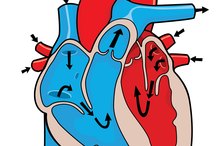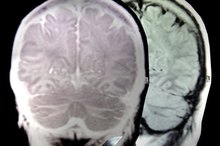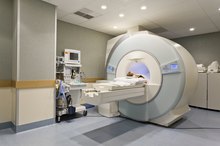How Are the Muscular & Nervous Systems Connected?
Many different body systems work together to perform daily functions in life. The musculoskeletal system and nervous systems work together to produce movement and keep your organs functioning 3. The muscular system is made up of muscles and tendons, while the nervous system is divided into subsystems — central, peripheral, somatic and autonomic nervous systems 3.
Tips
The nervous system sends information to the muscular system to produce body movement.
Muscular System Overview
The human body contains more than 650 different muscles in three categories, all under the control of the nervous system 3. Striated, or skeletal, muscles come under conscious, or voluntary, control. Smooth, or visceral, muscles, such as:
- those found in the digestive tract
- are connected to organs
- perform their work outside of voluntary control
The cardiac muscle has a single specialized function confined to the heart.
Nervous System Overview
What Do the Parts of the Brain Control?
Learn More
The nervous system consists of billions of neurons in constant touch with each other for the purpose of monitoring and regulating your internal and sensory functions 3.
The spinal cord behaves like an information superhighway, speeding signals from the brain to the PNS and vice versa. Like the muscular system, the PNS, consisting of all the roads that ultimately lead to the superhighway, has a dual function. One part is somatic, meaning under conscious control, and the other is autonomic, or outside of conscious control.
Read more: Nervous System Health
- The nervous system consists of billions of neurons in constant touch with each other for the purpose of monitoring and regulating your internal and sensory functions 3.
- Like the muscular system, the PNS, consisting of all the roads that ultimately lead to the superhighway, has a dual function.
Nervous System and Muscular System
Actions such as leaning over and picking up a dropped pen involve the coordinated effort of numerous muscle groups. Your conscious mind relays this command to your CNS, which translates it into electrical impulses. These are then channeled through the somatic part of your PNS to the nerves responsible for controlling the necessary muscles.
It feels as though this happens instantly, but in fact, it takes about 1 millisecond — 1/1000 of a second. Normally, your conscious mind is unable to speed up or slow down your heart rate, digestion or other visceral muscles because these are regulated autonomically.
- Actions such as leaning over and picking up a dropped pen involve the coordinated effort of numerous muscle groups.
- Your conscious mind relays this command to your CNS, which translates it into electrical impulses.
Related Articles
References
- University of Leeds: Faculty of Biological Sciences: Muscles & Nerves
- Anatomy Almanac: Anatomy Words: Muscle
- Science Olympiad: The Nervous System
- Simeon Career Academy: Muscular System: Facts, Functions & Diseases
- Goldstein DS. Adrenal responses to stress. Cell Mol Neurobiol. 2010;30(8):1433–1440. doi:10.1007/s10571-010-9606-9
- Eyesenck, M.W. Simply Psychology. New York: Taylor & Francis; 2012.
- Coon, D. & Mitterer, J. O. Introduction to Psychology: Gateways to Mind and Behavior With Concept Maps. Belmont, CA: Wadsworth; 2010.








